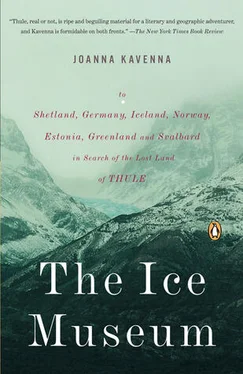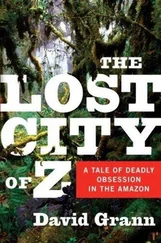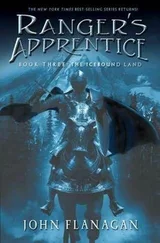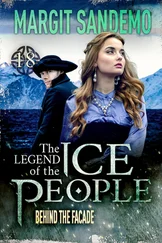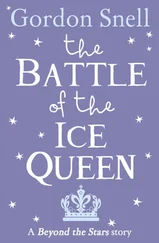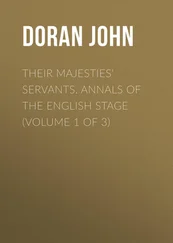Through the mist, I saw the Russian miners coming and going, sometimes on their own, sometimes in pairs. They walked past, saying nothing. They were the real representatives of the town of Barentsburg, and their faces were blank, impossible to read. There were no women on the street, no children. It was the end of their shift, and they walked into the canteen, a vast black-and-white building by the quayside, with a putrid smell rising from the kitchens. Above the entrance was a poster of a bearded Russian standing in front of an Arctic snowscape and a poem in Russian, written out large, saying:
SO, WHEREVER YOU NOW TRAVEL
ON THE THRESHOLD OF ANY SPRING
YOU WILL THINK OF ARCTIC WAYS
YOU WILL DREAM SNOWY DREAMS.
Dream the Arctic dream—even the Russian Arctic Coal Company was saying it to its employees. Natasha thought I shouldn’t go inside the canteen. The men were busy in there, dreaming the Arctic dream, and they couldn’t be disturbed. In the winter, when the sun had failed, the men would emerge from the darkness of the pits into the darkness of the afternoon, with the winds blasting across the frozen expanse of Grønfjorden. The lucky ones had their photos hammered to a board in the centre of the town, photos taken against luminous orange curtains, which stripped the colour from the subjects. Some of the men had put on suits and ties and tried to smile; others squinted miserably at the flash.
‘These are our best employees of recent days,’ Natasha said, though the photos looked as though they had been hanging there for decades. ‘We have visitors who ask if the people who come here have done anything wrong, but of course they haven’t.’
Once Natasha had summoned the spectre of Siberia, the tone was irreparably altered. The high-rise brick and tile, the decaying wood, the memorials paying homage to the dead—the victims of mining disasters, of plane crashes, of a dust explosion in 1997—created a strange atmosphere in Barentsburg. There was a Denisovich air to the miners slouching slowly from the pithead to the bar. If they were the lucky ones, they knew their country was in trouble. If this Arctic desert was a privileged life, they were men without illusions that things might improve.
Brooding over it all, there was a bust of Lenin, with a sign behind his head saying ARCTIC COAL. He was the most northerly Lenin in the world, said Natasha, laughing him off. But he made the place look trapped in the Communist past, trapped in Communist colours, Communist functionalism, fading away in the far north. In this land trapped in the past, Lenin was still presiding. One devastated brick façade had its date etched above the door, 1977, the year time stopped in the settlement, stranding the workers in a continual 1970s of dull orange and fading yellow. There were great holes in the roofs; the walls were streaked with dirt. It was impossible to disguise the fact that the town was poor. Most of it was made up of crumbling brick buildings, standing on shattered paving slabs.
We walked from Lenin along the main street, past the sign for the hotel, and the peeling paint of the post office. There was an old wooden church, compact and elegant against the sprawling block buildings. We stopped briefly in a yellow-tiled bar, studiously decorated with Arctic art, faded pastels of Barentsburg under ice, everything for sale. There was a small museum, with a collection of minerals, a reconstructed coal mine, and a gallery full of paintings of miners.
As Natasha said goodbye I tried to ask her why she had come to Barentsburg, what she did during the days, whether her husband was a miner. But she smiled and avoided every question. She told me she loved it there, but she looked tired and cold. It was impossible to tell. The Russians never came to Longyearbyen, Anders said, sotto voce, as we prepared to leave the Russian mine. Anders had become loquacious in my absence; perhaps it was the trip he had made to Barentsburg’s bar. He lit a cigar, puffing the smoke into the mist. He said that Barentsburg was a closed place. Through the mist we watched the workers stacking the steel containers, dragging boxes around on the quayside.
‘The Russians won’t be honest about Barentsburg,’ said Anders, in a cloud of smoke. ‘You can’t talk to the people much; they don’t want to say anything. It was worse before, but it’s still bad. They earn much less than the Russian officials say they do. That’s just one of the reasons why they tell you not to talk to the workers. The other reason is that they are all alcoholics.’
There was a last sound of the crash of steel along the quayside, and then we passed the receding shapes of the containers, blurred by the mist.
‘The hotel is full of rats,’ Anders said, as we left, ‘and the workers drink. The workers cannot leave Barentsburg, once they arrive; there is no transport available. If they leave before their contracts end,’ Anders said, ‘they lose all their money.’
The boat slid back along the coast, and the moon rose. The air was cold and the mist swirled around. The governor left the Russians to their frozen rocks, and hoped one day the coal would fail. Meanwhile he let the Norwegian Coal Company blast away, because Svalbard coal was the cleanest in the world, they claimed. The governor let the coal go; the companies exported their fossil fuels. Then the governor sponsored a scientific research base at Ny-Ålesund, to research the effects of fossil fuels on the Arctic. It was a paradox, a tidy story. It had a beginning—the Coal Companies—a middle—the Scientists—and an end—the Coming Earth, the future. Despite the blasting of the mines, the melting of the ice was a nightmare Svalbard was trying not to fall asleep into. The governor thought the mining could continue, so long as he sponsored the scientists in the north.
Flying from the mining town of Longyearbyen to Ny-Ålesund was a trip from cause to effect. As the mist breathed across the mountains the light aircraft shuddered along the runway, and rose suddenly into the air. The passengers sat among the crates of scientific equipment, with “fragile” scrawled across the boxes. The plane moved above the azure depths of Isfjorden, towards the mountains of Oscar II Land. Beneath lay vast glaciers, spilling ice into the fjord. They were named Nansenbreen, Sveabreen, Borebreen on the map; from the sky they were another crazy vista of ice and rock, the distinctions between places impossible to discern. Ny-Ålesund stood on Kongsfjorden, where icebergs drifted from a pale blue glacier.
Ny-Ålesund was little more than a few yellow, red and beige painted wooden houses, in a loose circle around a central mess building, with a broken train track at the edge, rusting into the tundra. There were no hospitals, no schools, just the wooden huts, made for scientists. There was a hotel for visitors, which was where I was taken, deposited by a friendly scientist and told to unpack and find my warmest clothes. There seemed to be no one else there. The corridors were silent; the living room was polished and empty. Paintings of ice-mountains hung on the walls. There was a notice saying: ‘Attention! Please take the polar bear threat seriously!’
The fjord was pale blue; the glacier fell in frozen cascades towards the edge of the water; the mountains rose above, a mist curling around their peaks, too light to obscure the contours of the rocks.
The scientists all ate in the mess room, talking about the melting of the ice, tucking into Scandinavian buffets. They were a sombre collection, sitting in their cramped huts making diagrams about the coming earth. The melting of the ice, they said, was a possible result of global warming. There had already been thinner ice cover in the Arctic Ocean during the summer in recent years. It might be related to global warming; it might be a trick of nature. If the ice began to melt more intensely there would be lots more water around, and what this would do was uncertain, they said.
Читать дальше
